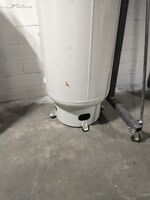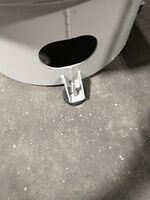Difference between revisions of "Anchoring Cement Application"
From Advance Coatings Wiki
Jump to navigationJump to search (Created page with "We have a product we manufacture / resell which is a type of Anchoring Cement. It is useful for bonding e.g. metal to concrete. ==Small Tank Installation== It's simple to us...") |
|||
| Line 4: | Line 4: | ||
It's simple to use. It's mixed in a two part, like an epoxy. Part A is the resin, and Part B is the catalyst. Here's an example where this Anchoring Cement was used. | It's simple to use. It's mixed in a two part, like an epoxy. Part A is the resin, and Part B is the catalyst. Here's an example where this Anchoring Cement was used. | ||
<gallery widths=300px heights=200px> | <gallery widths=300px heights=200px> | ||
| − | File: | + | File:Tank anchoring cement 1.jpg|Tank Placement. |
| − | File: | + | File:Tank anchoring cement 2.jpg|Close up view. |
</gallery> | </gallery> | ||
Revision as of 13:49, 23 January 2024
We have a product we manufacture / resell which is a type of Anchoring Cement. It is useful for bonding e.g. metal to concrete.
Small Tank Installation
It's simple to use. It's mixed in a two part, like an epoxy. Part A is the resin, and Part B is the catalyst. Here's an example where this Anchoring Cement was used.
While admittedly, the pictures don't show the install, the setup for this is as follows:
- Drill hole in concrete slightly larger than the threaded rod
- Mix the resin and catalyst
- Insert activated resin into the hole
- Insert threaded rod into hole
- Create scaffolding if necessary, so that the rod stays in position while it cures (vertical in this case).
- Clean up any excess with Acetone
- Once the resin has cured, test the bond, then attach any structure.
A similar procedure was used for two part epoxy and bathroom floor toilet bolts (unsuccessfully here, but that was due to user error).

